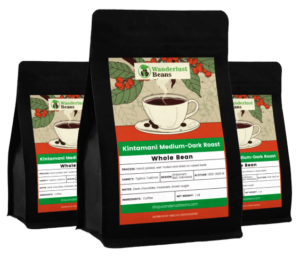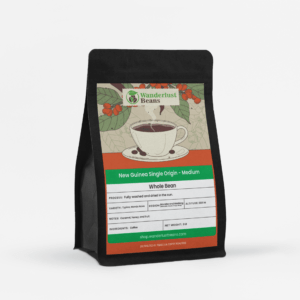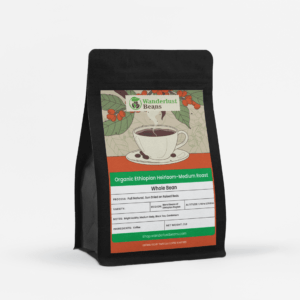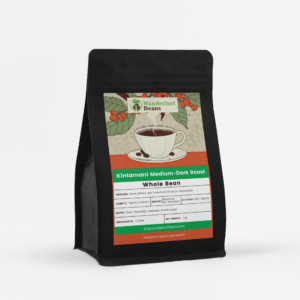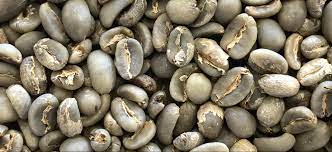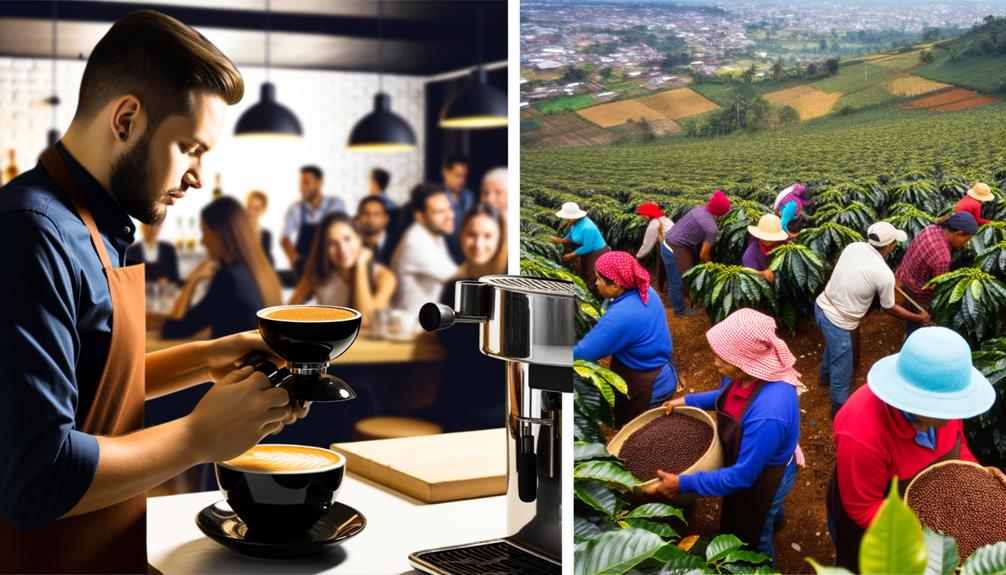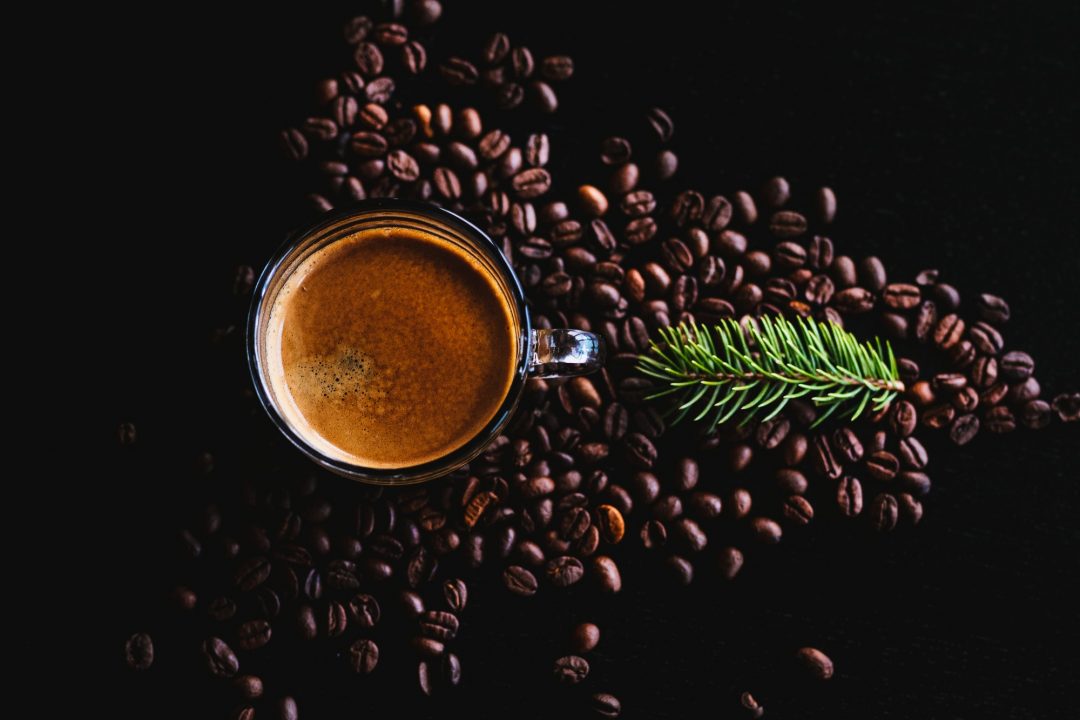It’s Not Just Roasted Coffee – It’s Passion
Coffee is more than just a beverage; it’s a passion and a daily ritual for millions of people worldwide. From sourcing the finest beans to exploring the art of roasting and brewing the perfect cup, coffee enthusiasts continually seek new ways to elevate their coffee experience. This comprehensive guide will explore the world of beans and roasters, share tips on finding and purchasing fresh roasted coffee, and provide a coffee brewing guide to help you enjoy the best coffee possible.
Table of Contents
Understanding Coffee Beans and Roasts
To appreciate the complexity and diversity of coffee, it’s essential to understand the beans themselves. Coffee beans are the seeds of the Coffea plant, with the two primary species being Coffea arabica and Coffea canephora (commonly known as robusta). Arabica beans are known for their delicate, nuanced flavors, while robusta beans tend to be more robust and bitter.
Different Coffee Roasts
Coffee roasts can be categorized into light, medium, and dark roasts. Each roast level brings out different flavors and characteristics in the beans:
- Light Roasts: Light roasts preserve the beans’ unique origin flavors and are often brighter, more acidic, and fruity. They have a more lightweight body and color and are typically roasted to an internal temperature of around 356°F to 401°F (180°C to 205°C).
- Medium Roasts: Medium roasts strike a balance between origin flavors and the roasting process’s caramelization. These roasts have a more balanced flavor profile, with a medium body and color. The internal temperature for medium roasts ranges from 410°F to 428°F (210°C to 220°C).
- Dark Roasts: Dark roasts exhibit more pronounced caramelization and roasted flavors, with a full body and darker color. The beans’ origin flavors become less distinct, and the roasts are characterized by chocolatey, nutty, or smoky notes. Dark roasts are roasted to an internal temperature of 437°F to 464°F (225°C to 240°C).
The Art of Roasting: Coffee Roasters Near Me
Coffee roasting is a skilled craft that transforms green coffee beans into the aromatic, flavorful beans we love. Roasters carefully control temperature, airflow, and time to develop each bean’s unique flavor profile. Finding a local coffee roaster can enhance your coffee experience by providing access to fresh roasted beans, knowledgeable staff, and opportunities to learn more about the roasting process.
To locate coffee roasters near you, try the following tips:
- Online searches: Use search terms like “coffee roasters near me,” “coffee roasting company near me,” or “coffee shop roasters” to find local businesses.
- Local coffee shops: Many coffee shops roast their beans or partner with local roasters. Ask your favorite barista where they source their coffee and if they can recommend any local roasters.
- Social media: Follow local coffee enthusiasts, coffee shops, and roasters on social media platforms to stay informed about events, promotions, and new offerings.
- Farmers’ markets: Many local roasters participate in farmers’ markets, providing an opportunity to discover fresh, locally roasted beans.
Buying Fresh Roasted Coffee Beans: Online and In-person
When it comes to coffee, freshness is crucial. Freshly roasted coffee beans offer the best flavor, as they contain the most aromatic oils and have not yet lost their vibrant taste to oxidation. Whether you prefer to buy fresh roasted coffee beans online or in person, here are some tips to ensure you’re getting the freshest beans possible:
- Roasted on-demand: Look for companies that roast their beans to order, ensuring the beans are as fresh as possible when they reach you. Search for “coffee beans roasted to order” or “roast-to-order coffee” online to find such businesses.
- Roast date: Always check the roast date on the packaging. Coffee is best consumed within 2-4 weeks of roasting.
- Packaging: Quality packaging with a one-way valve helps preserve the coffee’s freshness by allowing carbon dioxide to escape while preventing oxygen from entering.
- Local roasters: Buying from local roasters or coffee shops often guarantees fresher beans, as the beans have not spent a significant amount of time in transit or storage.
- Subscription services: Many online roasters offer subscription services, ensuring a regular delivery of freshly roasted beans right to your door.
Storing Fresh Roasted Coffee Beans
Proper storage of your freshly roasted coffee beans is essential to maintain their flavor and aroma. Here are some guidelines for storing your beans:
- Airtight container: Store your beans in an airtight container to prevent exposure to oxygen, which can degrade the coffee’s freshness.
- Cool, dark place: Keep your container in a cool, dark location, away from direct sunlight or heat sources, which can cause the beans to deteriorate faster.
- Avoid the fridge or freezer: Storing coffee beans in the refrigerator or freezer can cause condensation and moisture issues, leading to stale or off-flavors.
Coffee Brewing Guide: Techniques for the Perfect Cup
Brewing a perfect cup of coffee requires attention to detail and experimentation. This coffee brewing guide will help you navigate the various techniques and methods to achieve a delicious, well-balanced cup:
- Grind size: Match your grind size to your brewing method. For example, use a coarse grind for the French press, a medium grind for pour-over, and a fine grind for espresso.
- Water quality and temperature: Use filtered water with a balanced mineral content, and heat it to the ideal temperature (195°F to 205°F or 90°C to 96°C) for brewing.
- Coffee-to-water ratio: Start with a 1:15 or 1:16 coffee-to-water ratio and adjust according to your preference. Use a digital scale for accurate measurements.
- Brewing time and technique: Follow brewing guidelines for your chosen method, paying attention to pouring techniques, brewing times, and extraction.
Exploring Single-Origin Coffees
Single-origin coffees come from a single geographical region, offering distinct flavor profiles that reflect the unique terroir, processing methods, and varietals of that area. Exploring single-origin beans allows you to taste the diversity of flavors found in different coffee-growing regions and deepen your understanding of coffee’s complexity.
To begin your single-origin coffee journey, consider the following:
- Research coffee-growing regions: Learn about the flavor profiles of various regions, such as bright and fruity African coffees or chocolatey and nutty Central American coffees.
- Experiment with different origins: Purchase beans from a variety of regions to compare and contrast their flavors and characteristics.
- Attend tastings or cuppings: Many coffee shops and roasters host tastings or cuppings, providing an opportunity to taste and evaluate multiple single-origin coffees in a guided setting.
- Track your preferences: Keep notes on the beans you’ve tried, noting the flavors, body, acidity, and overall impressions. This can help you refine your preferences and identify patterns in your taste.
Supporting Local Coffee Roasting Companies
By choosing to support local coffee roasting companies, you are investing in your community and promoting sustainable, responsible coffee practices. Local roasters often have direct relationships with coffee farmers and prioritize ethical sourcing, ensuring that your coffee not only tastes great but also has a positive impact on the environment and the communities involved in its production.
When you choose to buy from local roasters, you can expect:
- Freshness: Local roasters can provide fresher beans, as they are often roasted close to the point of sale.
- Expertise: Local roasters are passionate about coffee and can provide valuable insights, recommendations, and education.
- Community involvement: Many local roasters participate in community events, fundraisers, and collaborations, fostering a sense of connection and belonging.
- Environmental sustainability: Local roasters often prioritize eco-friendly practices, such as using renewable energy sources, reducing waste, and promoting reusable packaging.
The Roast Shop Coffee Experience
Visiting a “roast shop coffee” establishment offers a unique and immersive coffee experience. These specialty coffee shops often roast their beans on-site, allowing you to witness the roasting process firsthand and enjoy the freshest possible coffee.
When you visit a roast shop coffee venue, you can expect:
- Education: Roast shop staff are knowledgeable about coffee and can offer guidance on bean selection, brewing techniques, and flavor profiles.
- Freshness: Beans roasted on-site guarantee peak freshness and the opportunity to purchase beans immediately after roasting.
- Variety: Roast shops often feature a rotating selection of beans from different regions, ensuring a diverse and ever-changing coffee experience.
- Craftsmanship: Roast shops take pride in the quality of their coffee and the skills of their roasters, ensuring that you enjoy a carefully crafted, flavorful cup.
The world of coffee is vast and diverse, offering endless opportunities for exploration and enjoyment. By understanding coffee beans and roasts, supporting local roasters, and mastering brewing techniques, you can enhance your coffee experience and savor the rich flavors and aromas of fresh roasted beans. Don’t be afraid to experiment and try new origins, methods, and roast levels to discover the perfect coffee for your taste. Happy brewing!

